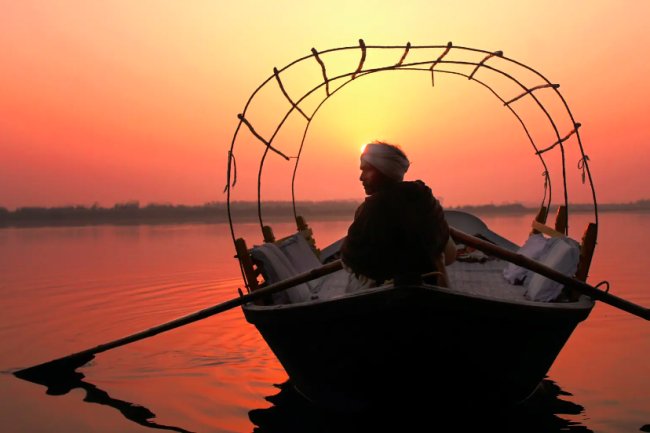The Ultimate Bucket List Challenge: How Long Does it Actually Take to Sail Around the World?
Learn how long it takes to sail around the world and the factors that impact the journey in this comprehensive guide. Discover the most popular routes, the role of weather conditions, the importance of boat speed, and the impact of stops along the way. Plan your dream adventure with this informative article.

Sailing around the world is a dream for many, and it requires a lot of planning and preparation. One of the most common questions that people ask when considering this adventure is, "How long does it take to sail around the world?" The answer to this question depends on various factors, such as the route taken, the weather conditions, the speed of the boat, and the number of stops along the way. In this article, we will provide you with a comprehensive guide to help you estimate how long it takes to sail around the world.
Choosing the Right Route
The route you choose to sail around the world plays a critical role in determining how long it will take. The most popular routes are the Trade Winds route and the Clipper route. The Trade Winds route is the most direct route, taking sailors through the Panama Canal, across the Pacific Ocean, through the Indian Ocean, around the Cape of Good Hope, and back to the starting point. The Clipper route is longer, taking sailors through the Southern Ocean, around Cape Horn, through the Atlantic Ocean, and back to the starting point. The Trade Winds route is the most popular because it is quicker, taking about 8 to 12 months to complete, while the Clipper route can take up to 18 months.
Weather Conditions
Weather conditions play a crucial role in determining how long it takes to sail around the world. The Trade Winds route offers favorable conditions, with the trade winds blowing in a consistent direction, making it easier to sail. On the other hand, the Clipper route takes sailors through the Southern Ocean, which is known for its harsh weather conditions, including strong winds and high waves. Sailors must be prepared for the rough weather and plan accordingly.
Speed of the Boat
The speed of the boat is another critical factor in determining how long it takes to sail around the world. The speed of a boat depends on various factors, such as its size, design, and the prevailing wind conditions. Generally, boats with longer waterlines and sleeker designs can move faster through the water. However, sailors must also consider the durability and seaworthiness of the boat, especially when sailing through rough seas.
Number of Stops Along the Way
The number of stops along the way can also impact how long it takes to sail around the world. Sailors often make stops at various ports to restock on supplies, refuel, and make repairs. The more stops made, the longer it takes to complete the journey. However, sailors must also balance the need for restocking and making repairs with the need to maintain the momentum of the journey.
How long did it take for Jessica Watson to complete?
In the recently released Netflix movie, True Spirit based on the real life sailing circumnavigation of the globe by 16 year old Australian, Jessica Watson, the journey was completed in 6.9 months. In the movie this journey time seems even more prolonged as for a significant portion of the film she was without any wind at all, so how did she complete the journey so quickly?
There were several reasons why Jessica Watson's journey took less time than the average. First, she chose the traditional route which goes eastward, following the trade winds across the Southern Hemisphere. This route is well known for being faster and easier to sail than other routes, which can involve more challenging weather and conditions.
Another factor that contributed to her faster journey time was her use of modern technology and equipment. Jessica had access to satellite communications and advanced navigation systems, which allowed her to stay connected with her support team on land and navigate more efficiently. She also had a modern, purpose-built boat that was designed specifically for the voyage, making it faster and more reliable.
Jessica was also a highly experienced sailor, having grown up sailing and competing in races from a young age. She spent two years preparing for the voyage, which included completing numerous training courses, as well as testing and refining her boat and equipment. This experience and preparation allowed her to sail with confidence and efficiency, avoiding any major setbacks or delays.
FAQ
Q: What are some risks involved in traveling the world by sailboat?
A: Traveling the world by sailboat can be a thrilling and fulfilling experience, but it does come with some risks. Some of the potential risks include unpredictable weather conditions, equipment failure, navigational errors, accidents or collisions with other boats or objects, and medical emergencies.
Q: How can unpredictable weather conditions pose a risk for those traveling the world by sailboat?
A: Unpredictable weather conditions can pose a significant risk for those traveling the world by sailboat. Storms, hurricanes, and other severe weather events can cause damage to the boat, endanger the crew, and delay or derail the journey. Sailors must be prepared for a variety of weather conditions, and have the necessary equipment and knowledge to handle them.
Q: How can equipment failure pose a risk for those traveling the world by sailboat?
A: Equipment failure is another potential risk for those traveling the world by sailboat. A malfunctioning engine, broken rigging, or other equipment failure can leave the boat stranded or vulnerable to further damage. Sailors must ensure their equipment is well-maintained and in good working condition, and have backup plans in case of failure.
Q: How can navigational errors pose a risk for those traveling the world by sailboat?
A: Navigational errors can pose a significant risk for those traveling the world by sailboat. Getting lost or misjudging a course can lead to the boat being stranded, hitting rocks or other obstacles, or being lost at sea. Sailors must have the necessary navigational tools and knowledge to avoid these risks.
Q: What are some potential risks of accidents or collisions while traveling the world by sailboat?
A: Accidents or collisions with other boats or objects can pose a significant risk for those traveling the world by sailboat. These accidents can cause damage to the boat, injuries to the crew, or even result in the loss of life. Sailors must be vigilant, follow proper navigation rules and procedures, and take steps to avoid collisions.
Q: How can medical emergencies pose a risk for those traveling the world by sailboat?
A: Medical emergencies can also pose a significant risk for those traveling the world by sailboat. Remote locations, lack of medical facilities, and limited access to medical personnel can make it challenging to receive prompt medical attention. Sailors must have a basic knowledge of first aid, carry necessary medical supplies, and plan ahead for medical emergencies.
Q: How real is the risk of Piracy?
A: The risk of piracy is a real concern for sailors traveling in certain parts of the world, particularly in areas such as the Gulf of Aden, the Red Sea, and the western Indian Ocean. Pirates in these regions are known to target boats and ships, with the goal of taking crew members and passengers hostage for ransom. While piracy has been on the decline in recent years due to increased security measures and patrols by naval forces, sailors must still take appropriate precautions to minimize the risk. This may include avoiding known high-risk areas, traveling in convoys with other boats, maintaining a constant lookout, and having appropriate security measures in place, such as barbed wire or electric fencing. It's important to note that the risk of piracy varies depending on the location, and sailors should research and stay informed about the latest security updates and advisories before embarking on a journey.
Conclusion
In conclusion, sailing around the world is an incredible adventure, but it requires a lot of planning and preparation. How long it takes to sail around the world depends on various factors, such as the route taken, weather conditions, speed of the boat, and the number of stops along the way. Generally, the Trade Winds route is the most direct and quickest, taking about 8 to 12 months to complete, while the Clipper route takes up to 18 months. However, sailors must also be prepared for the various challenges that come with the journey, including harsh weather conditions, the need for restocking, and making repairs.
Whilst attempting to circumnavigate the globe on a yacht can seem like an easy and appealing challenge, it certainly is not and should only be attempted with many years of experience behind you or an experienced team of sailors beside you.
Article Written by Mike Hodkinson
Listen to this article on Medium
Follow Us On Twitter - www.twitter.com/BoatFunder
Follow Us On Instagram - www.instagram.com/BoatFunder












